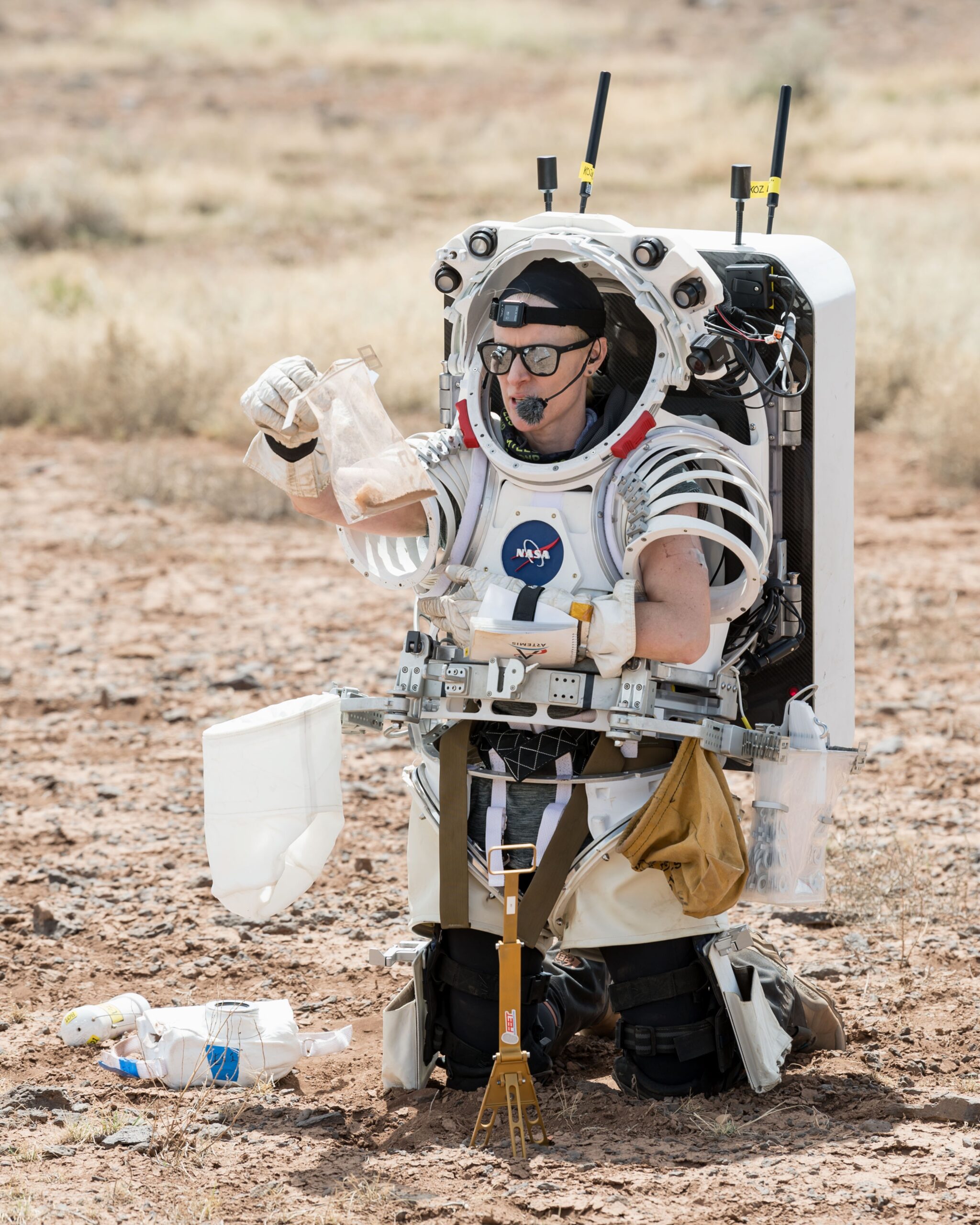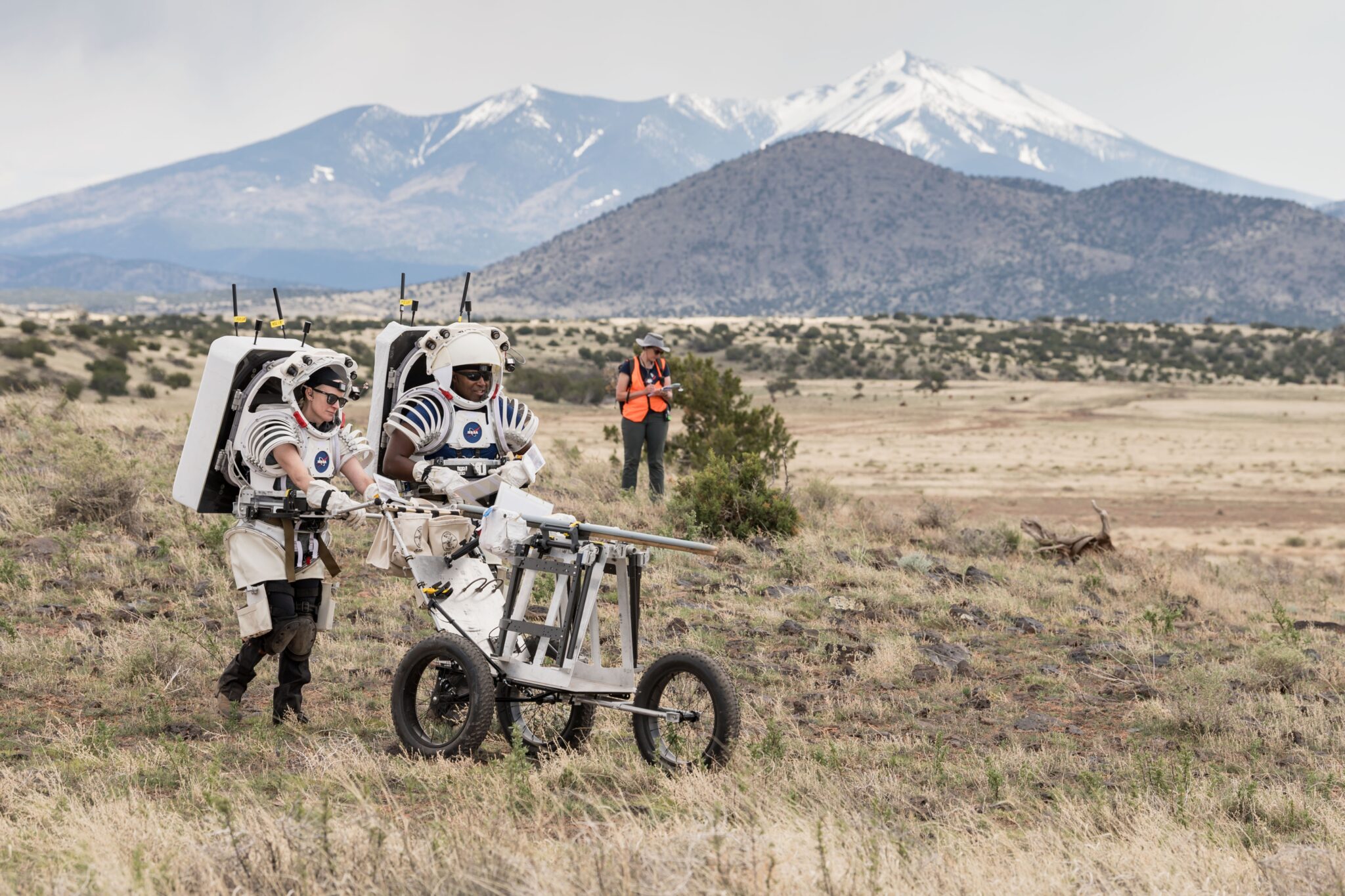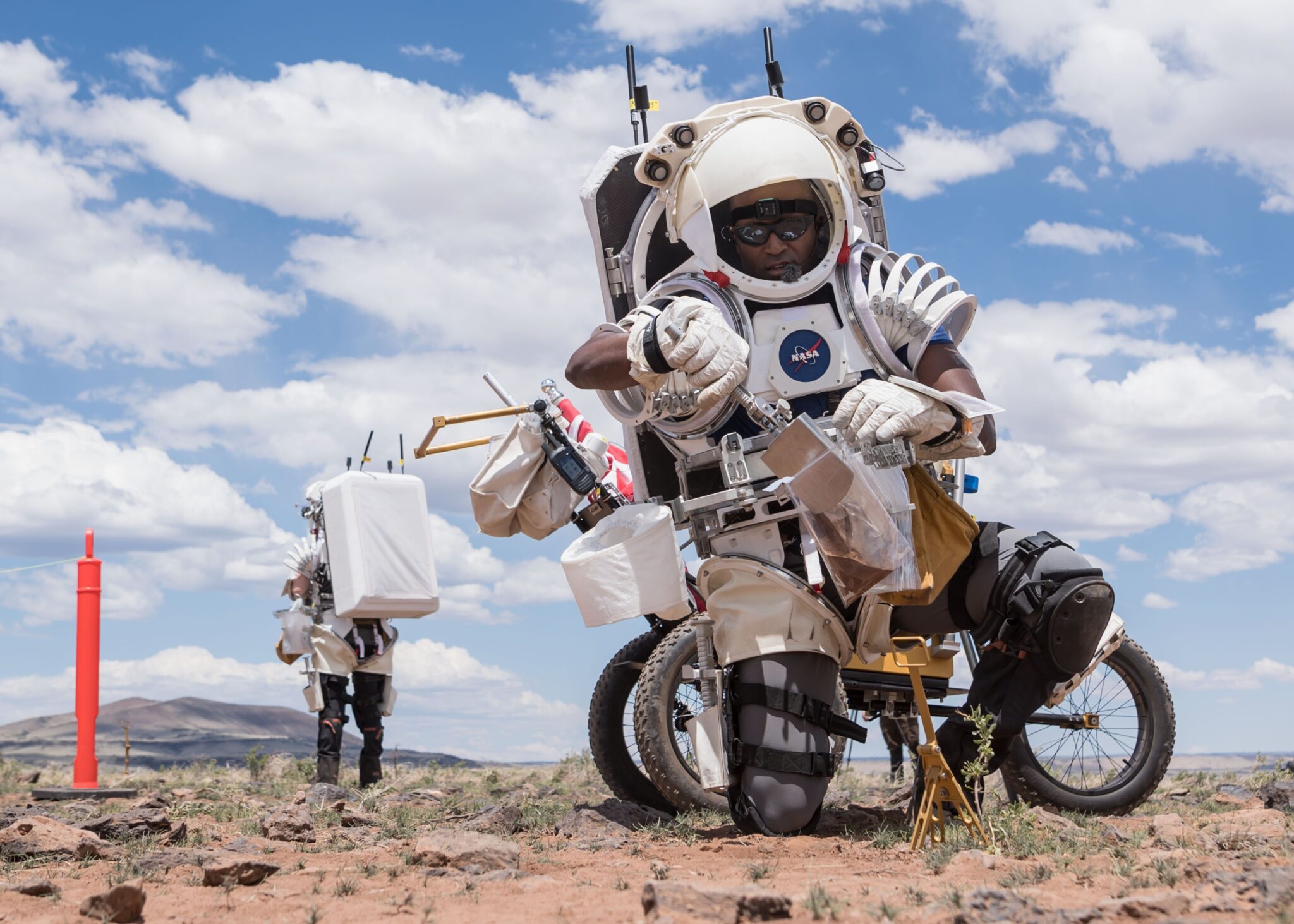Many readers of our site would probably like to become astronauts. It may seem that representatives of this profession lead an almost stellar lifestyle, constantly give interviews and enjoy having the best view of the Earth from space. But in fact, this work is very exhausting, both physically and mentally, and also requires constant training.

An example is NASA’s astronaut Kate Rubins. She knows what it’s like to fly into space in a cramped capsule and live in microgravity and an unpleasant smell on the ISS at an altitude of 400 km above the Earth. At the same time, she is currently undergoing a very grueling week-long training in a bulky suit under the burning Sun in the Arizona desert at the San Francisco volcanic field. In addition to the mock-up of the spacesuit, Rubins and her colleague Andre Douglas have to push a tool cart across the field.

This is part of the preparations for the Artemis III mission, which will return NASA astronauts to the Moon after a 50-year gap. The Arizona desert has been a training ground for exploring our moon since the time of Apollo, as its terrain is similar to that of the Moon, including craters, faults and volcanic features.
NASA has not yet selected the astronauts who will set foot on the Moon in 2026 as part of the Artemis III mission. Therefore, astronauts are now testing equipment and technologies that can be used in a future space mission.

During the tests, two integrated teams train together to practice operations on the Moon. The team in Arizona consists of astronauts, NASA engineers and field experts. A team of flight controllers and scientists from the Johnson Space Center in Houston guides their activities.
Various technologies are tested to determine their usefulness in a future mission to the Moon. Among them are an augmented reality head-mounted display and light beacons that will help the crew navigate their way back to the lander during an expedition to the south pole of the Moon. After each simulated moonwalk, participants meet to discuss their knowledge and improve technology.
Earlier, we reported that space tourists from AX-2 turned out to be unable to use the toilet in space.
According to NASA
Follow us on Twitter to get the most interesting space news in time
https://twitter.com/ust_magazine


